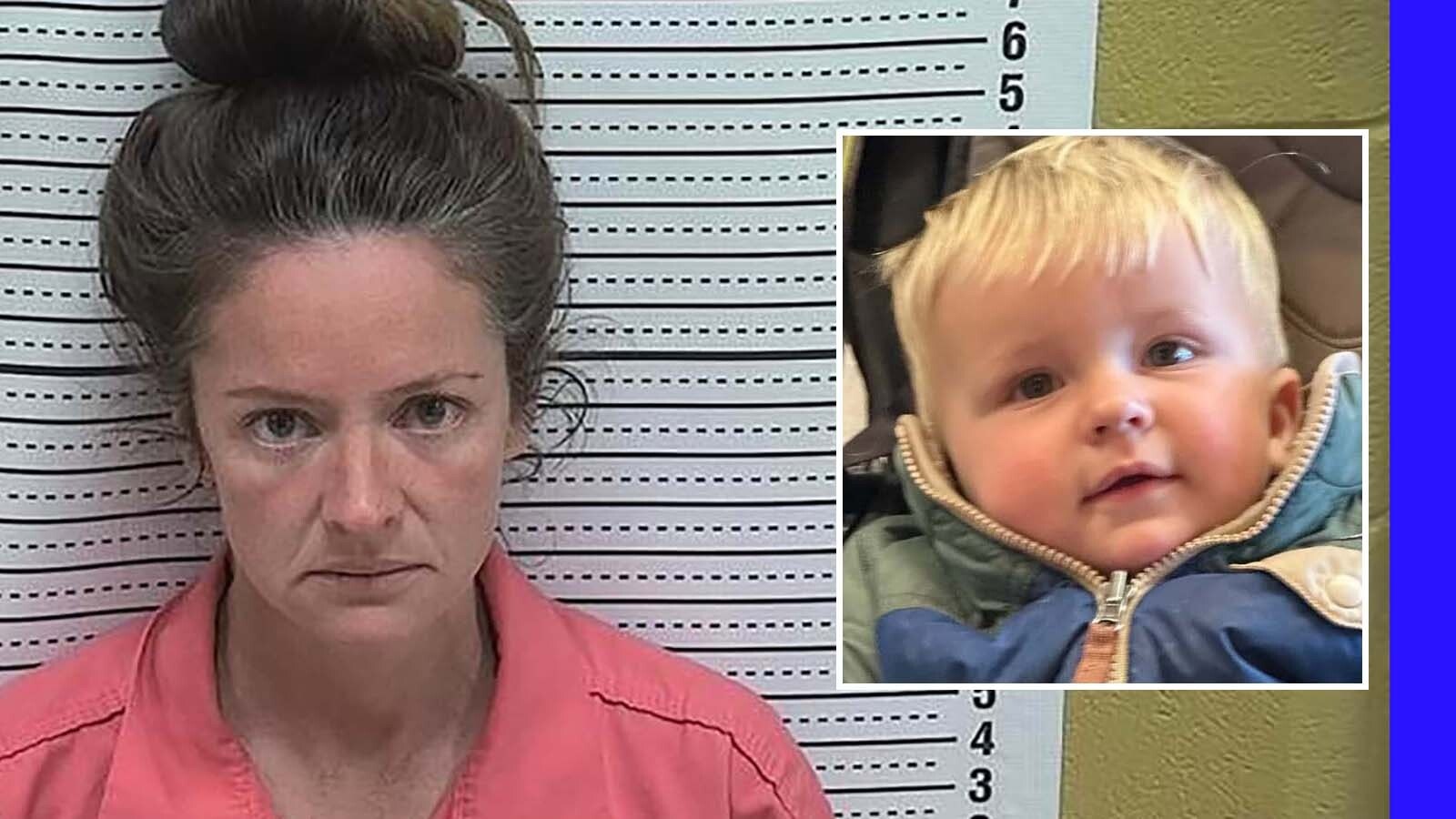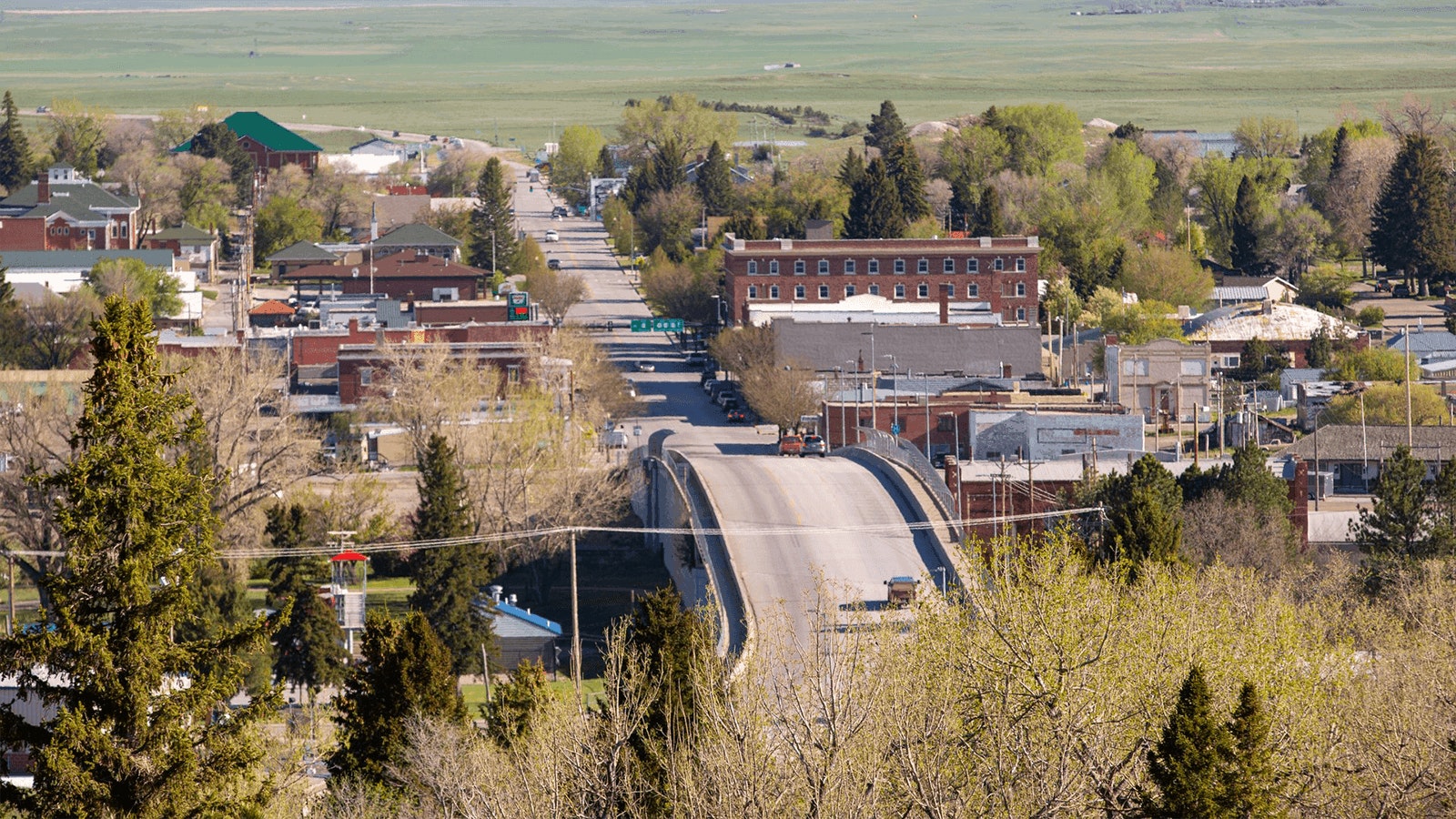In the final few moments of convicted killer Mark Hopkinson’s life, protesters converged on the Wyoming State Capitol while the governor stood in his office, with a priest by his side.
The state of Wyoming executed Hopkinson by lethal injection Jan. 22, 1992, at the Wyoming State Penitentiary in Rawlins — 13 years after he was convicted.
Hopkinson had ordered the torturous murder of a 23-year-old Jeffrey Green, who was set to testify against him for the 1977 bombing of an attorney’s home in which three people had died.
Hopkinson was convicted of all four murders and sentenced to death for killing Green.
Then-Gov. Mike Sullivan knew he had the power to commute Hopkinson’s death sentence to life in prison, and he warred with himself over whether he should, or would.
“You’re not faced with that kind of decision very often,” Sullivan told Cowboy State Daily in a Wednesday interview. “You don’t make it without a lot of consideration.”
Sullivan had support from others. His priest stayed with him in his office in Cheyenne the day of Hopkinson’s execution.
The depths of contemplation Sullivan reached changed him, though he now can’t pinpoint exactly how. After people surmount decisions that serious, they become more introspective, more thoughtful, he said.
On the one hand, Sullivan knew the state he led was about to take a life. On the other hand, not even the rigid constraints of federal prison had kept Hopkinson from having Green killed.
That was Sullivan’s chief consideration when he ultimately chose not to commute the man’s death sentence, he said.
“If you can’t keep people from committing, or arranging, a murder while they’re in prison then the death penalty – in the nature of the case – I believed it was appropriate,” he said. “It wasn’t a simple choice.”
It was taxing, said Sullivan.
Three Decades, Not Another
Wyoming hasn’t executed anyone since that day.
But it tried.
Cpl. Wayne Martinez was 27 years old, working alone in the shift command at the Wyoming State Penitentiary in Rawlins on June 26, 1997, when three inmates attacked him as part of an escape plan that ultimately failed.
James Harlow struck Martinez in the head with a fire extinguisher. Richard Dowdell and Bryan Collins stabbed him repeatedly with homemade knives, the Rawlins Times reported.
Carbon County Attorney Thomas Campbell, who is now a retired state district court judge, chose to pursue the death penalty for all three men.
Dowdell and Harlow were already serving life sentences for murder when they killed Martinez, he said.
Campbell’s thinking was not unlike Sullivan’s: prison sentences hadn’t kept these men from killing.
Prosecuting three death penalty cases was an immense undertaking.
Campbell estimated during his interview that each case cost about $300,000 to prosecute. His office was small, staffed by just three people at the time.
All three men won changes of venue since the penitentiary was such a huge employer in Carbon County, Campbell recalled.
He tried Dowdell in Torrington; Harlow in Thermopolis, and Collins in Laramie. This compounded travel, lodging, and food expenses for prosecutors and defense attorneys.
Jury selection took roughly three weeks due to the life-or-death implications of each case. The parties would keep 16, rather than just 12, jurors so they’d have four alternates in case of sickness or other issues during the prolonged trials.
Some criminal cases have as many as 10 pre-trial motions – disputes about what evidence to let to trial and other matters. Harlow’s case had more than 100, Campbell said.
Then there’s the bifurcated trial for death-penalty cases, a system established across the nation starting in the 1970s.
After the jury convicts a man for murder, its members hear a separate presentation of evidence and testimony on aggravating and mitigating factors in the case.
It’s a long process through which to bring a murder victim’s family. And in the end, the jury decides whether the state should execute the defendant.
“Everybody… kind of has that gut reaction that there should be a death penalty, you know, but that’s just not the case (when it’s your decision),” said Campbell. To get 12 people willing to call for an execution when the decision falls to them, a case “has to be extraordinary,” he added.
Harlow’s jury called for his execution.
Collins’ and Dowdell’s juries did not. They were both sentenced to life in prison.

Nope
But for Harlow that wasn’t the end of the story. He appealed to the federal U.S. District Court for Wyoming.
On Feb. 15, 2008, a decade after Harlow’s conviction, U.S. District Court Judge Clarence Brimmer overturned his death sentence.
Brimmer’s order says essentially everyone in the case fell short of the standards for putting on a death-penalty trial: the judge, the prosecutor, and the defense attorney.
Harlow’s public defense attorney’s work was hampered by “continuing” conflict with the State Public Defender’s office and his fear of losing his job. Money shortages kept him from investigating things that could have kept Harlow from being sentenced to death, Brimmer wrote.
Campbell’s office didn’t supply prison base files pertaining to the inmate witnesses who testified against Harlow.
Lastly, wrote Brimmer, the case judge didn’t explain the death penalty decision well enough to the jury, and didn’t do an adequate job of letting Harlow’s attorney choose jurors.
By then, Campbell was no longer the county attorney, and other major figures in the case had moved on to other roles.
“There was no re-trial, I know that,” he said.
Harlow, who is now 55, was sentenced to life in prison. The Wyoming Department of Corrections is keeping him in an out-of-state facility, it told Cowboy State Daily this week.
Meanwhile
By then, Dale Wayne Eaton was sitting on death row.
DNA evidence in 2002 linked him to the 1988 kidnapping, rape and murder of Lisa Marie Kimmell.
Then-Natrona County District Attorney Mike Blonigen pursued the death penalty, and the jury chose it for Eaton, after convicting him in 2004.
Blonigen could not be reached by publication time.
U.S. District Court Judge Alan B. Johnson in 2014 found that Eaton’s attorneys’ performances were constitutionally deficient during the penalty phase of his trial.
Wyoming again pursued the death penalty starting in 2015, but Eaton was ordered to undergo a mental health evaluation in 2020, and the Wyoming State Hospital one year later deemed him incompetent to face trial, Oil City News reported at the time.
Wyoming withdrew its intent to seek the death penalty in 2021. By then, it was still Blonigen’s case, though he was no longer the elected official of that office.
Current Natrona County District Attorney Dan Itzen was.
“It was a decision that Mike Blonigen and I, and the family, sat down and made together,” Itzen told Cowboy State Daily. “And you know – given the competency issues and those things that was the best course we could go forward with.”
Now 80, Eaton remains at the Wyoming Medium Correctional Institution in Torrington.

Filling New Shoes
Campbell was later appointed to serve as Laramie County District Court Judge, where he oversaw a death penalty case from the bench.
Nathaniel Castellanos was convicted of two counts of murder and one count of attempted murder in the August 2011 shootings of three people at his Cheyenne home.
Blonigen pursued the death penalty in that case, along with Itzen.
Castellanos’ jury rejected the death penalty, and he was sentenced to life in prison.
Itzen told Cowboy State Daily he’s not sure why Wyoming hasn’t executed anyone in 33 years – except that it’s a rigorous process, and the local prosecutors take the decision very seriously.
“I don’t think the death penalty is something to be bargained with,” said Itzen. “If you file it, you have to go to trial and go through with that. It can’t be, ‘I’m using it as leverage to get an individual to plead.’”
And in the case of Castellanos, Itzen believed in it, he said. The three deaths were “almost execution style.”
Castellanos fatally shot a woman in whom he had a romantic interest, and her boyfriend in their foreheads. He then shot the woman’s roommate in the head twice, and she lived.
Police arrived in time to hear the final shot. They found Castellanos standing calmly in front of his kitchen window, claiming “the shooter” had just fled. They also found a wet handgun on the kitchen counter next to a wet paper towel with blood on it, court documents say.
That trial spanned four weeks, including half-days on Saturdays, Itzen said.
Though Itzen believes in the death penalty and believes it should remain an option for Wyoming prosecutors, the thought nagged at him as he delivered his closing argument in Castellanos’ trial.
“I remember… thinking in my head, my God, I’m going to ask these people to kill this man,” said Itzen. “It’s a very real thing.”
When Itzen opened his mouth, he said, “This man deserves to die.”
He felt like he stumbled over the words. But to this day he’s not sure if the jury could sense his nervousness.
If asked to perform the same feat today, said Itzen, he would.
Now 45, Castellanos’ is incarcerated in the Tallahatchie County Correctional Facility, in Mississippi, according to the Wyoming Department of Corrections’ inmate locator.
Today
Wyoming prosecutors in recent years are not strangers to first degree murder charges, but it’s rare for them to seek the death penalty.
Rowan Littauer, 19, and Orion Schlesinger, 18, strode into their peer Dakota Farley’s home in Big Piney the night of Feb. 1-2. Littauer shot the 23-year-old Farley with a compound bow, and Schlesinger stole his gun, court documents allege.
They’re both charged with first-degree murder variations, with Schlesinger’s charge based on the theory that he plotted the alleged murder with Littauer.
Sublette County Attorney Clayton Melinkovich told the judge during the case’s preliminary phase that the death penalty was still on the table. But he later withdrew it, saying he didn’t want to exacerbate an ongoing public defender shortage, and he didn’t believe a local jury would sentence the two, reportedly troubled teens to death.
Another striking murder case involving suspected killer Clark Perry Baldwin is soon entering Wyoming courts. Baldwin was convicted last week in the 1991 murder of a Tennessee woman.
He’s suspected of killing two more women in Wyoming, according to court documents.
Since he first filed first charges the Wyoming case in 2020, Sweetwater County Attorney Danny Erramouspe has been waiting five years to prosecute Baldwin.
But Erramouspe wasn’t ready to say on Tuesday whether he’ll seek the death penalty in that one.
“I’ll have to look to see whether we have the factors – whether it’s a possibility that it’ll actually have to happen if we do achieve it,” he said. It’s also a question of what Baldwin’s life sentence in Tennessee entails, said Erramouspe.
As for whether Erramouspe has other scruples about applying the death penalty, he said: “If it’s within the realms of the law, then I have an obligation to look at it.”
Forward
The Wyoming Legislature debated repealing the death penalty in 2021, but that effort failed by an 11-19 Senate vote.
State Sen. Chris Rothfuss, D-Laramie, said at the time that the risk wasn’t worth the benefit.
“You can’t get this wrong even once,” he said at the time. “Just imagine the circumstance where, ‘oops! We really did think that person was guilty, (but they weren’t).’”
“The idea that we’d convict and execute an innocent person is beyond what I’d accept from government,” he continued. “I can’t imagine a more severe (governmental) power than the right to choose life and death, when there is an alternative.”
Wyoming State Public Defender Brandon Booth referred Cowboy State Daily to his predecessor, longtime State Public Defender Diane Lozano, who retired from the position last year.
Lozano could not be reached by publication time, despite multiple efforts.
She now directs Full Picture Justice – a group that challenges the death penalty.
As for why Wyoming hasn’t executed anyone in more than three decades, former Gov. Sullivan said he can make a guess, albeit one informed by stark experience.
Part of it is sheer statistics, he said.
Texas has a population of about 31.3 million people (roughly 50 times Wyoming’s 587,000), and has carried out 592 state executions since 1976. Its current death row population is 178, according to the Death Penalty Information Center.
More populous states have more total crime, and more death-penalty cases as a result, Sullivan noted.
But, said Sullivan, Wyoming’s culture could be unique as well.
He characterized the state’s culture as more thoughtful, “less bloodthirsty” – which could also drive a prosecutor’s decisions about whether, and how often to pursue the death penalty.
Clair McFarland can be reached at clair@cowboystatedaily.com.





